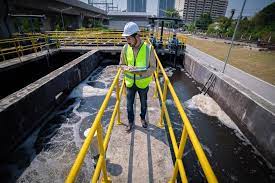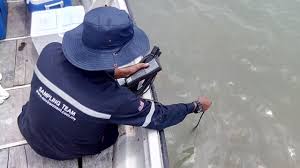Water quality monitoring is of little use without a clear and unambiguous definition of the reasons for the monitoring and the objectives that it will satisfy. Almost all monitoring (except perhaps remote sensing) is in some part invasive of the environment under study and extensive and poorly planned monitoring carries a risk of damage to the environment.
Parameters monitored in water quality include: chemical, biological, radiological and microbiological.
Water Quality Monitoring
In some nations, most of the portable water used for both domestic and industrial purposes are channeled from rivers and groundwater. The present water quality monitoring status involves monitoring only groundwater once every year by each state’s water board using FEPA standards.
The United States Environmental Protection Agency (EPA) sets standards that, when combined with protecting ground water and surface water, are critical to ensuring safe drinking water.
The EPA also regulates about 90 contaminants and so does FEPA (Federal Environmental Protection Agency) but the EPA works with its regional offices, states, tribes and its many partners to protect public health through implementing the Safe Drinking Water Act.
Routine Monitoring
Inspectors in charge of Drinking Water Quality Surveillance conduct regular verification, water quality tests and sanitary inspections to determine whether water utilities, community water committees, food processing industries, private or public establishment and private water system owners meet standard for drinking water quality.
The frequencies of monitoring are as follows:
On-site drinking water systems are checked at least once every 3 years.
Drinking Water Quality Surveillance agency increases the frequency of sampling for drinking water facilities in the following areas:
Areas located in high risk for faecal contamination or chemical contamination;
Highly populated areas;
Areas prone to floods.
Read Also : Water Quality Standards: Standards for Drinking Water Quality
Centralized drinking water system: For a population of < 5000, one sample is collected per 2000 population per month; for population of 5000 – 100000, one sample is collected per 5000 population per month; for population of > 100000, one sample is collected per 10000 population per month.
Inspectors for drinking water quality conducts sanitary inspection each time a water sample is collected in accordance with the procedures developed by the Federal Ministry of Health.

Sampling and Analytical Methods
Sampling and testing are conducted according to the following minimum requirements:
1. Point of compliance
Locations where samples are collected must be representative of the water source, treatment plant, storage facilities, and distribution network, points at which water is delivered to consumers.
For centralized drinking water system, samples are taken in the distribution system
In case of water supplied from an on-site water system, samples are taken at the hand pump outlet or from the bucket used to fetch water; and in household water storage
In case of water supplied from a tanker, samples are taken at the point at which it emerges from the tankers,
In the case of water used in a food-production undertaking, samples are taken at the point where the water is used in the undertaking
2. Sampling Method
All precautions must be taken to prevent contamination of the sample and to ensure the concentration of the substance being determined do not change between sampling and analysis.
This is ensured by using trained personnel (inspectors for drinking water quality surveillance) in the process of sample collection. Sampling methods must comply with ISO or WHO guideline.
3. Analytical Method
Analytical methods must comply with ISO or WHO guideline. Field test kits may be used by the surveillance agency to conduct routine tests.
4. Laboratory Quality Assurance
Laboratories contracted by the Drinking Water Quality Surveillance agency to conduct water testing must comply with NIS ISO 17025: 2005
In summary, water quality monitoring and surveillance is used by regulatory bodies to ensure that water supplied meet their designated uses. Monitoring and surveillance involves collection and analyses of water samples.
Read Also : Biological Methods of Weed Control Guide

